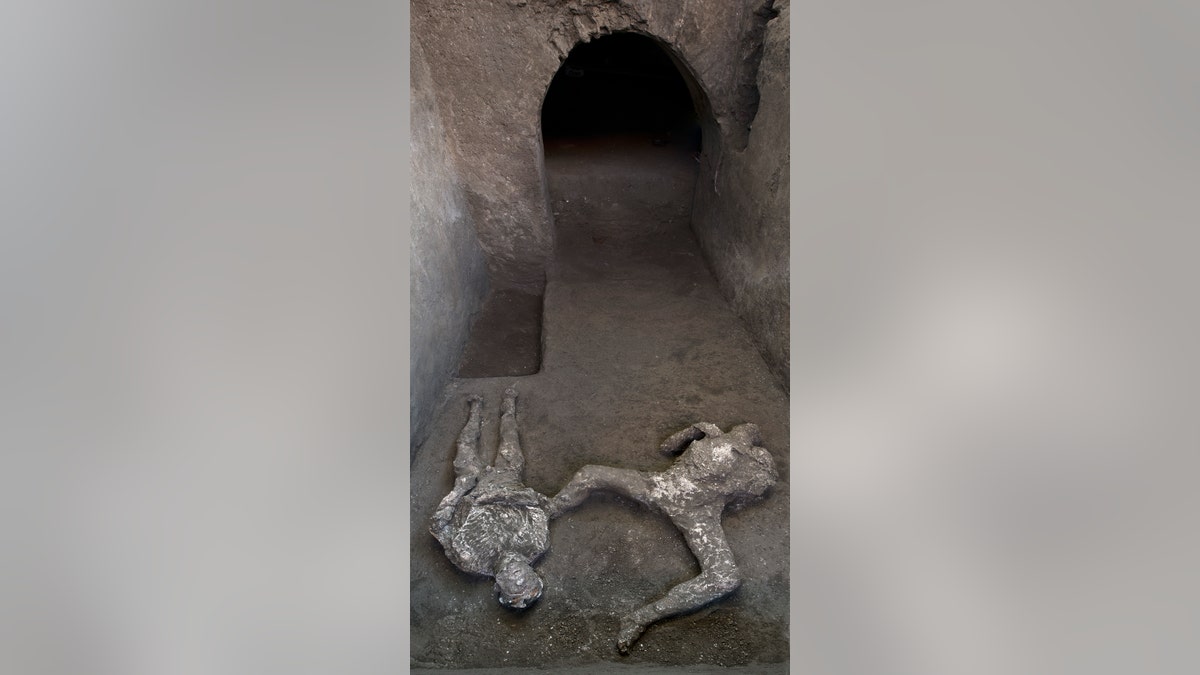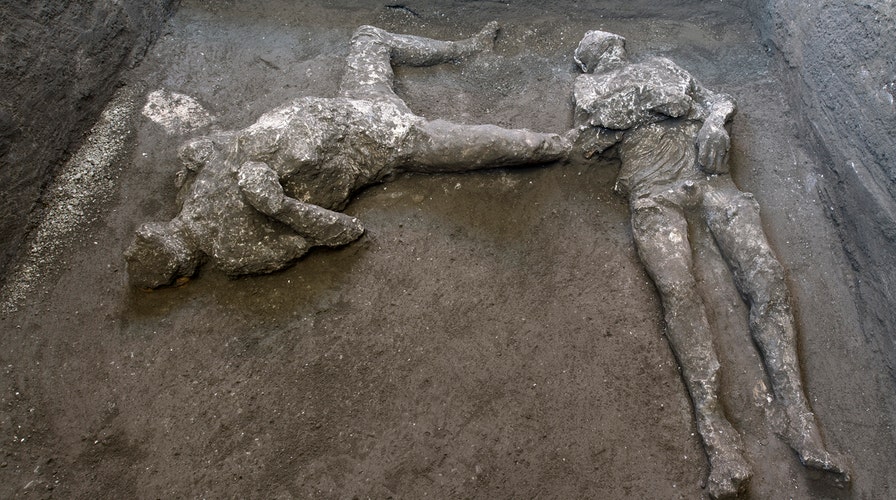Pompeii 'sorcerer’s treasure trove' discovered, with bones, skull charms and gems for rituals
Bones, charms and gems for rituals all unearthed in a ‘treasure trove’ Pompeii discovery.
The grisly remains of a master and his slave in their final death throes have been discovered amid the ruins of the ancient Roman city of Pompeii.
The skeletal remains of what are believed to have been a rich man and his male slave attempting to escape death were found during excavations in the Civita Giuliana area.
Parts of the skulls and bones of the two men were found near a cryptoporticus, or covered gallery, of an ancient villa. Casts of the skeletons have been made, according to the Archaeological Park of Pompeii.
SHOCKING POMPEII DISCOVERY: EXPERTS FIND EVIDENCE OF NEURONS IN VESUVIUS VICTIM
Pompeii officials said the men apparently escaped the initial fall of ash from Mount Vesuvius, then succumbed to a powerful volcanic blast that took place the next morning. The later blast “apparently invaded the area from many points, surrounding and burying the victims in ash,” Pompeii officials said in a statement.

The casts of what are believed to have been a rich man and his male slave fleeing the volcanic eruption of Vesuvius nearly 2,000 years ago, are seen in what was an elegant villa on the outskirts of the ancient Roman city of Pompeii destroyed by the eruption in 79 A.D., where they were discovered during recent excavations, Pompeii archaeological park officials said Saturday, Nov. 21, 2020.
The remains of the two victims, lying next to each other on their backs, were found in a layer of gray ash at least 6.5 feet deep, they said.
The ancient city was devastated following the eruption of Mount Vesuvius in 79 A.D. Pompeii was quickly buried by volcanic ash, killing about 2,000 of the city’s residents, according to History.com.
PALATIAL ROMAN HOME BURIED IN ASH FROM MOUNT VESUVIUS REVEALS ITS RICHES
In 2018, an excavation at the site unearthed the skeleton of a man who was crushed by a large block of stone while attempting to flee the Mount Vesuvius eruption.

Officials say that the remains were found near the ancient villa's cryptoporticus, or covered gallery. (Parco Archeologico di Pompei via AP)
Archaeologists also unearthed the final resting place of an ancient racehorse among the ruins of Pompeii.
Additionally, a scrawled piece of text on a wall in Pompeii is also rewriting the history of the famous ancient eruption of Mount Vesuvius.
GRUESOME POMPEII DISCOVERY: ANCIENT CITY REVEALS GRISLY SECRET

The cast of one of the two bodies believed to have been a rich man and his male slave fleeing the volcanic eruption of Vesuvius nearly 2,000 years ago, is seen in what was an elegant villa on the outskirts of the ancient Roman city of Pompeii destroyed by the eruption in 79 A.D., where they were discovered during recents excavations, Pompeii archaeological park officials said Saturday, Nov. 21, 2020 (Parco Archeologico di Pompei via AP)
The charcoal inscription, which was discovered in 2018, suggests that the eruption occurred in October of 79 A.D., two months later than previously thought.
CLICK HERE TO GET THE FOX NEWS APP
A study also revealed that when Mount Vesuvius erupted, the intense heat caused victims’ skulls to explode and their blood to boil.
Fox News’ Chris Ciaccia contributed to this article.
Follow James Rogers on Twitter @jamesjrogers

